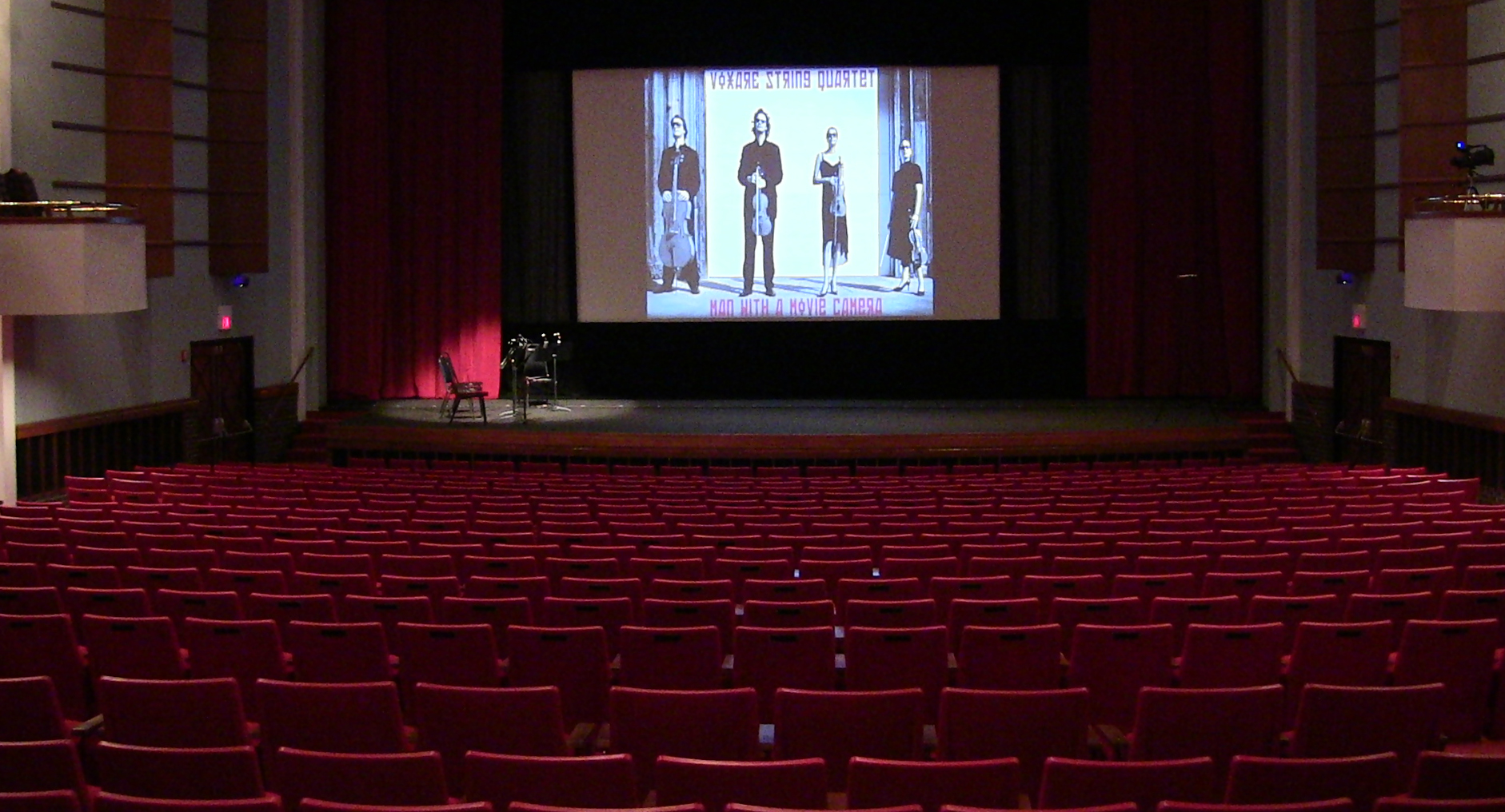Voxare Meets The Man with a Movie Camera : The Development
Voxare Meets The Man with a Movie Camera is the result of a painstaking process undertaken by the quartet over a number of months. The idea of accompanying a silent film is one that we had had for some time. The ultimate product of our intensive work was the result of a series of decisions that dictated subsequent steps. Here's how the project came to be.
1) The first large decision was whether to use a newly composed score or to use pre-existing music. Ultimately we decided that using pre-existing music would be the more compelling, unique, and challenging option. Little did we know just how challenging our choice would make the project.
2) With the decision made that we would be using pre-existing music, we began watching silent films- as many as we could procure. As Erik is a film aficionado, he particularly enjoyed this part of the project. The vast majority of the films were rejected because they were simply too long. Playing continuously for two hours did seem appealing to us or our prospective audiences.
3) Did we want to use a film that had a concrete narrative or one more abstract? Many of the films we watched were Romantic in nature and followed traditional storylines. Most scenes played out over a long period of time with one fixed camera, much like a play. Coupled with the traditional settings and costumes, we were left feeling uninspired. How would we choose music to support the narrative with a movie such as this? Using 20/21 century music would seem contrived and out of place with such a movie and would have limited success supporting a long and slowly advancing plot. Using Romantic music, with its less diverse stylistic languages, would both limit our ability to effectively support the narrative and make the performance span less varied and therefore potentially less engaging.
4) We came across Vertov's Man with a Movie Camera and almost instantly knew that it was the perfect movie for us. It is one of few silent movies whose incredible visual energy (over 18,000 edits over the course of 66 minutes!) means it could stand as an equal partner to the music we would choose. And, while watching the movie, the idea of using Soviet-era music, from a time and place that also produced this movie, immediately came to mind. This would make for an amazing visual and sonic experience.
5) The easy part of the project was done. Next up: choose music. We wanted to use music that fit within the the film's gestalt. Surrounded by stacks of quartet music, we read through numerous quartets. By this time, we had seen the movie quite a few times, so we had a loose idea of the film's content in our minds as we read through the music. We made note of musical sections that we enjoyed and that we thought would support the music's visual energy. Ultimately, we choose more standard repertoire than unknown, with works by Shostakovich and Prokofiev making a large portion of the musical selections. However, one exception to this is Mosolov, a composer not well known in the United States but whose music deserves recognition. The industrial qualities of his music lent themselves perfectly to various scenes in the film.
6) How we assembled the music to support the film is a miracle of labor. Because the movie is somewhat abstract and absent a traditional plot, we were left to determine the narrative and then choose music to support that narrative. The final product is one that serves to enhance the narrative that Vertov embedded in the film- a day in the life of a Soviet citizen, from morning to night, from labor to recreation. We had squabbles amongst ourselves over what music supported which scenes best, but we came to create a musical plan with which we've all been very happy.
7) We are amazed at how well the music fits with and supports the happenings on-screen. The New York Times agrees, writing, “With rustic melodies made edgy through piquant harmonies, and in passages of turbulent mechanical chugging, the music neatly corresponded to Vertov’s jumpy barrage of images.” We rarely play entire movements, instead employing musical segments that more closely fit the action. Of course, fitting this music together to be played continuously was much, much, more work, but also created a better and more compelling project.

